On View
Four Overlooked Women Abstract Expressionists Are Spotlighted in London
The exhibition shows how the principles of Abstract Expressionism were applied to the medium of collage.
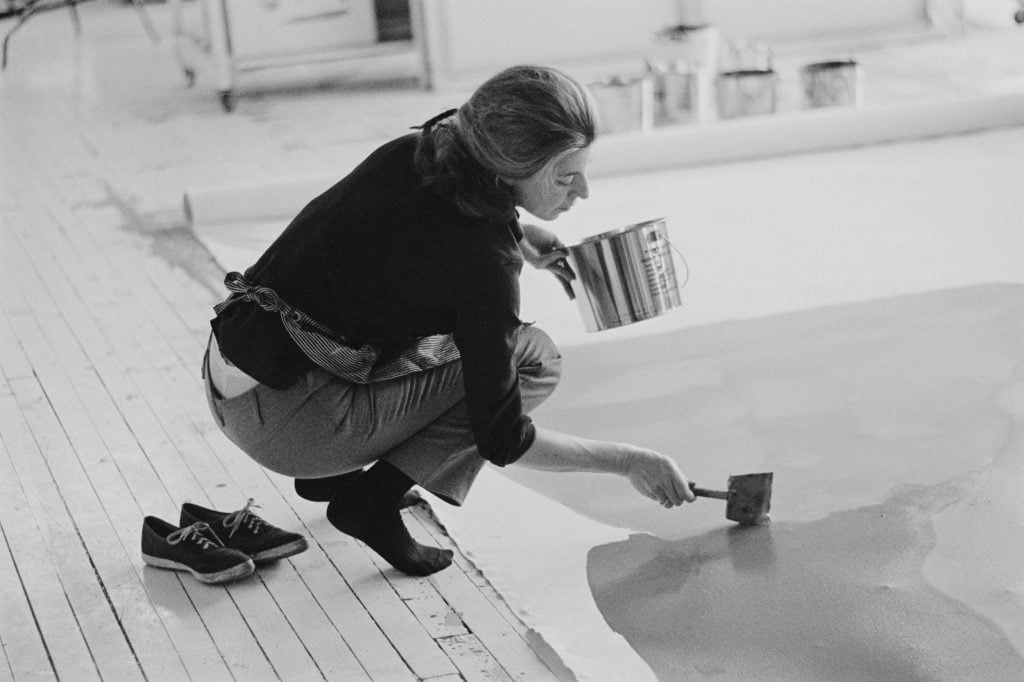
The exhibition shows how the principles of Abstract Expressionism were applied to the medium of collage.

Jo Lawson-Tancred

When we think of Abstract Expressionism, we think of large, declarative canvases onto which pigment has been flung, dripped, pooled, or applied in broad, bold brushstrokes. Usually by men. “Montage,” a new exhibition at Gazelli Art House in London, puts the spotlight on women Abstract Expressionists, offering a mix of big names like Helen Frankenthaler, Grace Hartigan, and Betty Parsons alongside those whose legacies are still unfairly overlooked, like Perle Fine, Nancy Grossman, and Sonja Sekula.
“Montage” shows how these artists, best known as painters, also applied the movement’s radical, experimental spirit to smaller-scale collage works. This survey of mixed-media works includes examples made using all manner of found materials like wood, tissue paper, and sand, in many cases embellished with paint, ink, and charcoal. In this way, the works also evince the enduring influence of European Modernism on the midcentury New York art scene.
Artnet News picked out four artists from the show whose work was critically acclaimed in their lifetimes and are now finally receiving the attention they deserve.
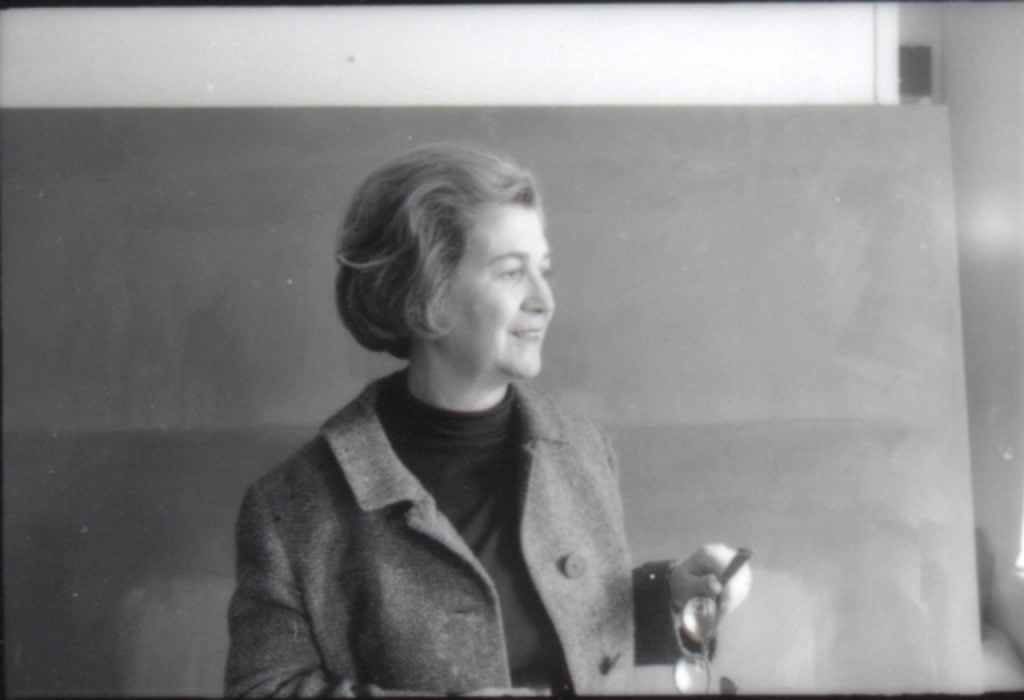
Perle Fine in her New York studio in c. 1963. Photo: Maurice Berezov, courtesy of Perle Fine Estate and Gazelli Art House, © AE Artworks.
Born in Boston in 1905 to Russian immigrant parents, Fine showed an early interest in art and moved to New York in her early twenties to pursue an education at the Art Students League. There she opted to study under the renowned German-born artist Hans Hofmann, who was instrumental in developing the formal breakthroughs that defined European movements like Cubism into a more gestural, expressive style. Over time, Fine cultivated a number of high-profile collectors including Museum of Modern Art founding director Alfred Barr, art director and publisher Emily Hall Tremaine, and architect Frank Lloyd Wright, but also supported her practice by working as a gallerist.
By 1945, Fine had developed an interest in nonrepresentational art and joined the American Abstract Artists group. Five years later, Willem de Kooning nominated her to join “the Club,” a members-only meeting place on 8th Street where a tight-knit community of artists met to socialize, plan, and debate. The group selected her to participate in the historic Ninth Street Show, which featured artists like Philip Guston, Elaine de Kooning, Joan Mitchell, Robert Motherwell, and Barnett Newman; the show established Abstract Expressionism as a major American art movement. Fine exhibited in all six of the subsequent annual invite-only exhibitions until 1957.
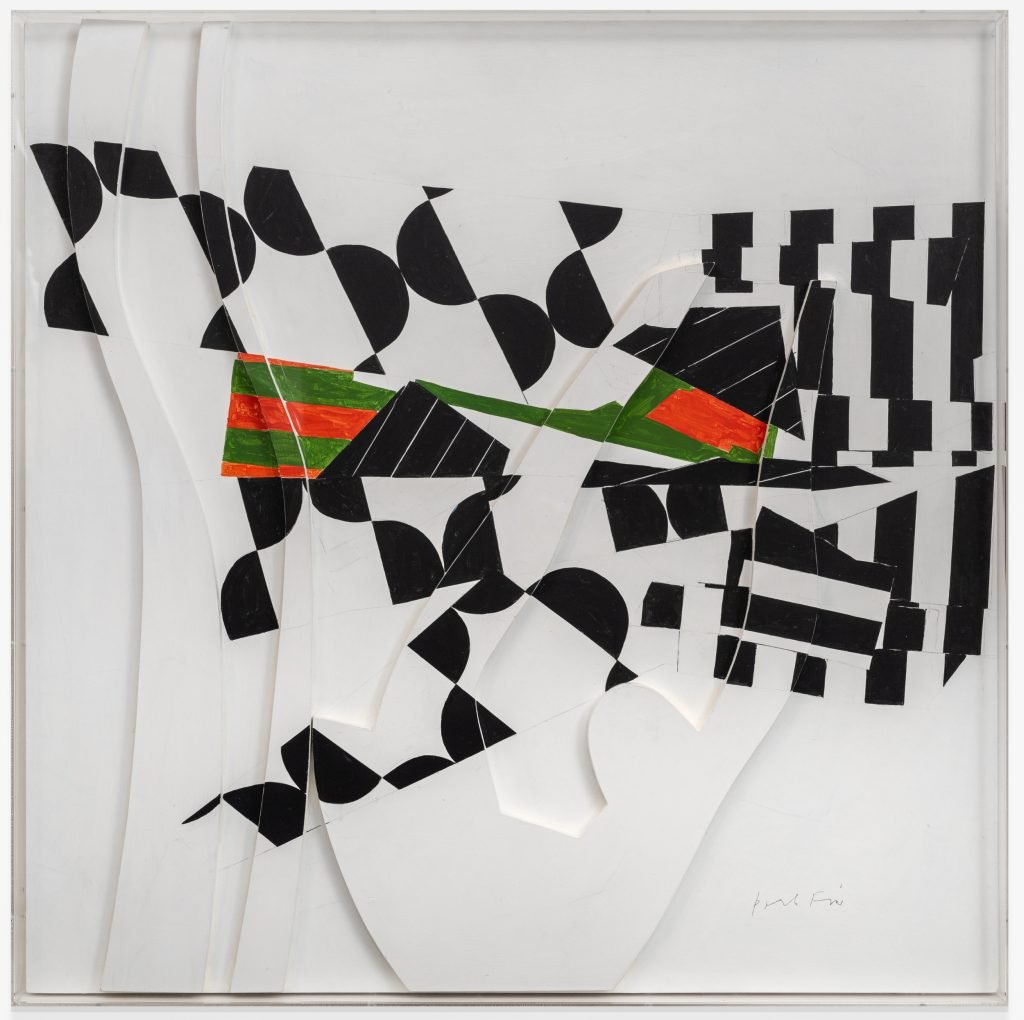
Perle Fine, Supersonic Calm (c. 1966). Courtesy of Gazelli Art House and Berry Campbell, New York. © A.E. Artworks.
In 1968, Fine noted that collage helped her learn how construct a composition. “When you do something to that white paper, when you put one or two forms on that white paper, that simple sheet of white paper can become one of the most beautiful things in the world if those forms are put in there in such a way as to involve every inch of that from top to bottom and from left to right,” she said. “Which is something I never was as aware of as when I worked this out in collage and later in painting. So that another great truth about art was revealed to me in this way!”
After many years living with Alzheimer’s, Fine died of pneumonia aged 83 on May 31, 1988.
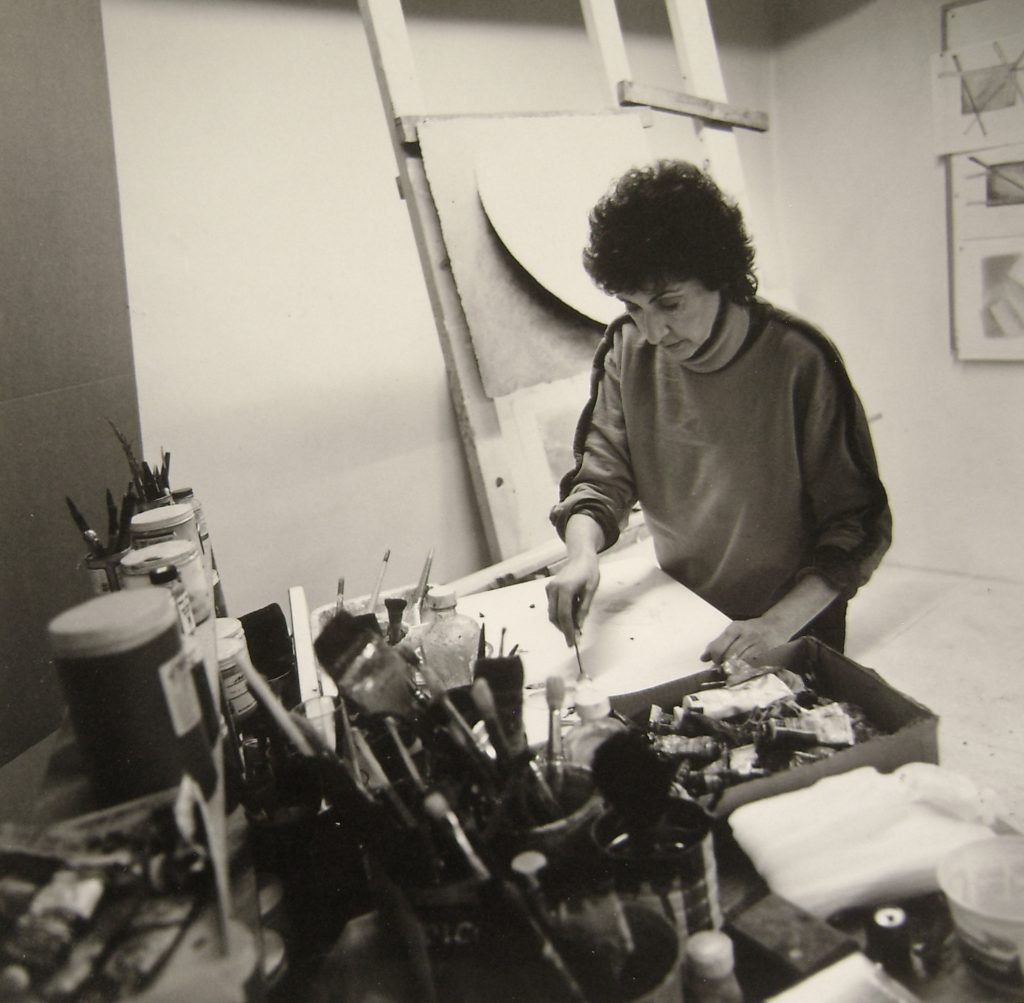
Lilly Fenichel in her studio. Courtesy of Lilly Fenichel Foundation.
Fenichel was born in 1927 to a Jewish family in Vienna that fled the Nazis in 1939, eventually settling in Hollywood. After completing her studies at the California School of Fine Arts (later renamed the San Francisco Art Institute) in 1952, Fenichel became a regular on the burgeoning Los Angeles art scene and eventually a key member of the second generation of the Bay Area School of Abstract Expressionism. She supplemented her income by working as an art director and costume director in the film industry.
From early in her career, Fenichel became known for striking works made using monochromatic or somber palettes. Though she befriended significant artists on the West Coast like Larry Bell and Ed Ruscha, she decided in 1952 to move to New York, where she believed women artists were more respected. There she befriended artists like Jackson Pollock and Mark Rothko and began teaching art classes at the Museum of Modern Art.
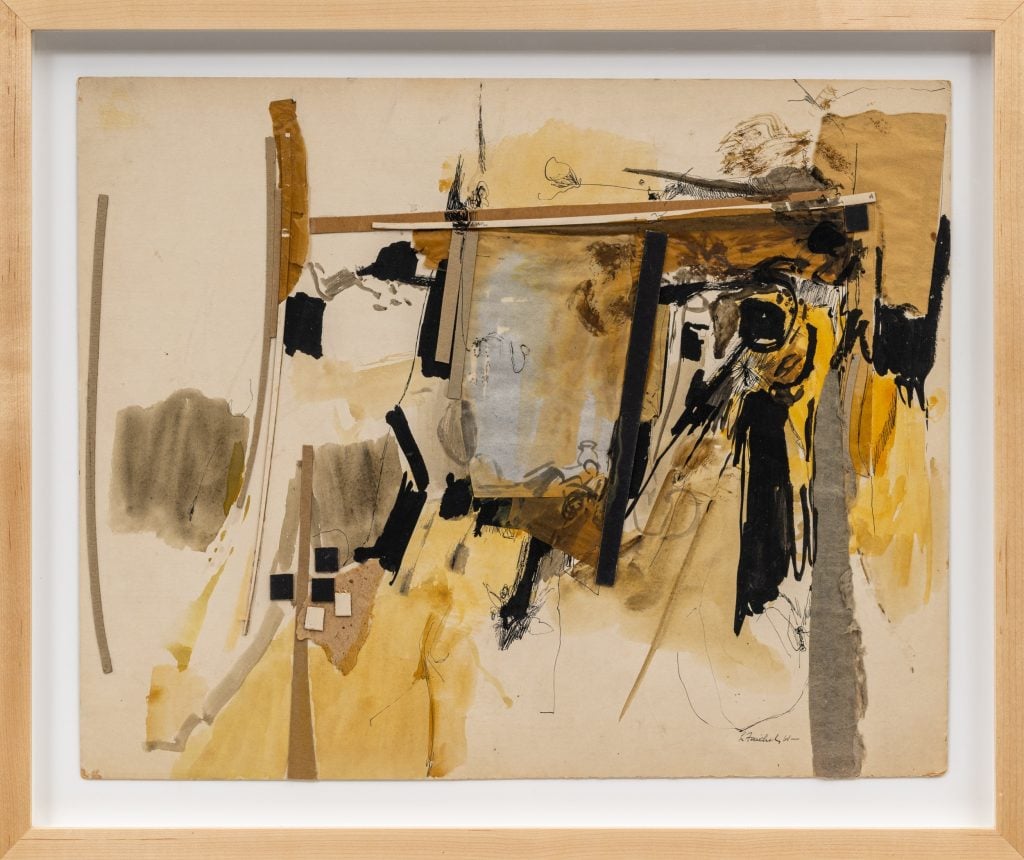
Lilly Fenichel, Collage IV (1961). Courtesy of Gazelli Art House and Berry Campbell, New York, © Lilly Fenichel Foundation.
“I was an Abstract Expressionist, but with a lot of drawing in it,” Fenichel reflected in 2011. “From the early ’60s, I drew a lot. They were kind of surrealist, very personal, demon, abstract drawing and paintings… There was a progression from those into these minimal paintings that were in my first one person show, at the Santa Barbara Museum in the late ’60s.”
In 1981, Fenichel moved to New Mexico, having fallen in love with the city of Taos some decades previously. She died in Albuquerque in 2016, just short of age 90.
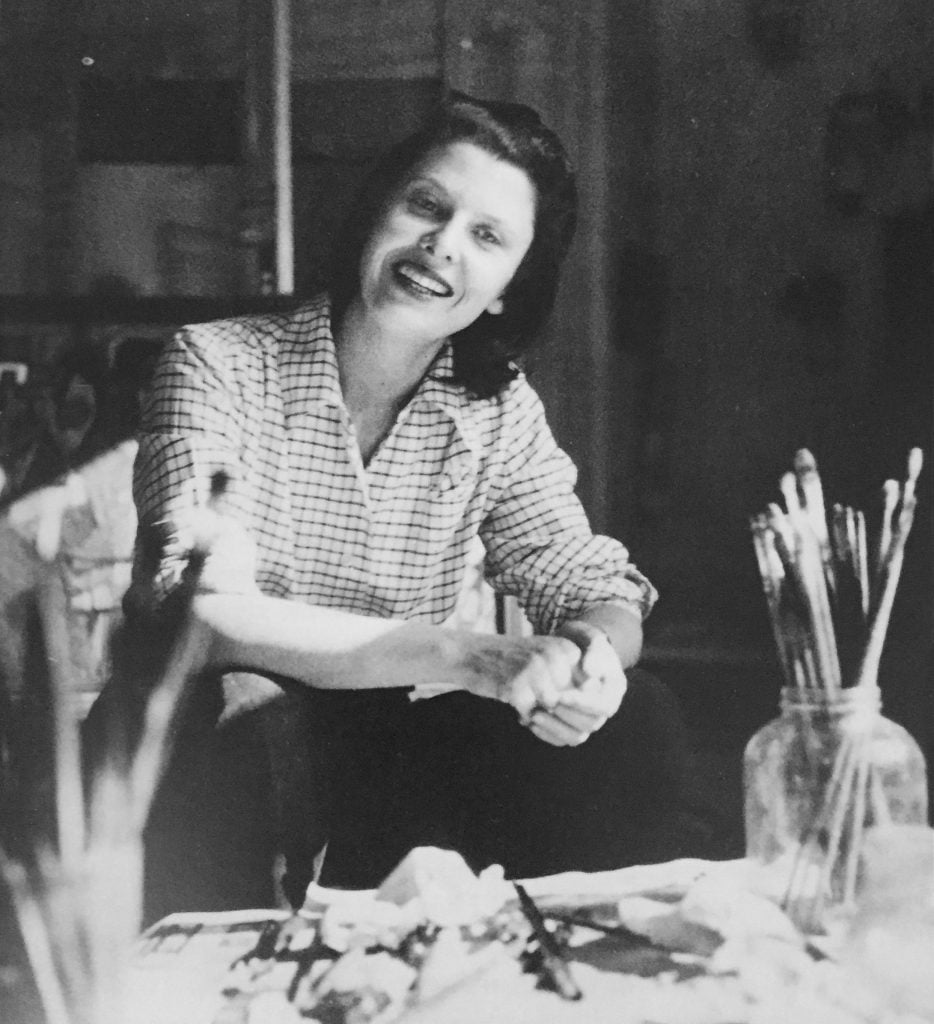
Sonja Sekula in her Breton Studio in 1945. Courtesy of Peter Blum Gallery.
Born in Lucerne, Switzerland in 1918, Sonja Sekula moved around with her family from a young age, settling in New York in 1936. She eventually joined the Art Students League and studied under fellow European-born Modernist artists George Grosz from Germany and Morris Kantor from Russia. She fell in with a crowd of exiled Surrealists like André Breton and began exhibiting through major gallerists like Peggy Guggenheim and Betty Parsons, in one case appearing alongside Pollock and Newman in a 1949 show. At one time, she lived with dancer-choreographer Merce Cunningham and composer John Cage.
Sekula was known for small, densely intricate, usually very colorful works. Shortly after she joined Betty Parsons, some of the gallery’s biggest stars, like Pollock and Rothko, complained that it had let in too many artists, “many of them amateurs, most of them women,” and left.
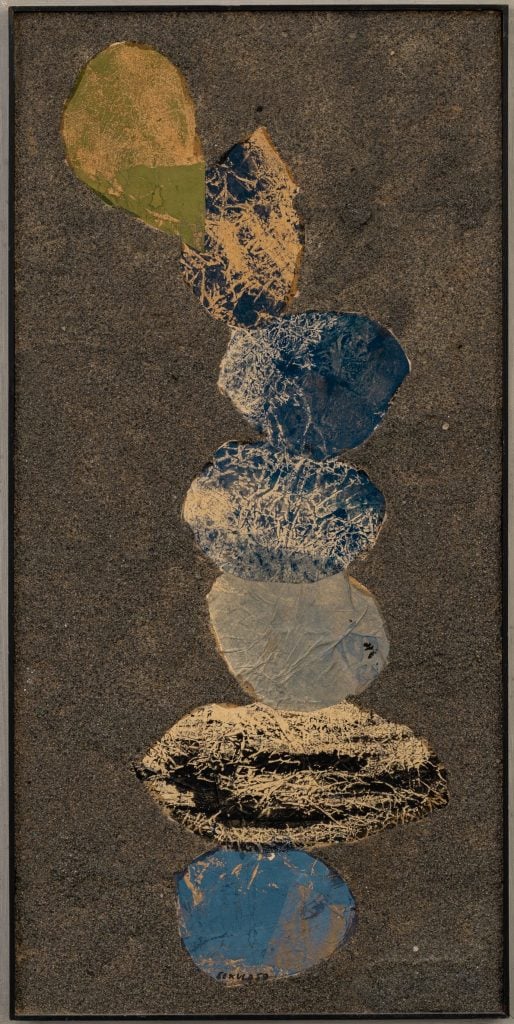
Sonja Sekula, Untitled Collage (1959). Courtesy of Gazelli Art House.
Those who knew Sekula remarked on her easy, spirited nature. It is also notable that she was very open about her homosexuality. “To feel guilt about having loved a being of your own kind body and soul is hopeless—let us hope there were many pure moments in each of these attractions and loves,” she wrote in her journal.
It has been recorded that during frequent hospitalizations in psychiatric wards, doctors tried to cure Sekula of her homosexuality. In 1961, she wrote: “Life was an interesting experience. I do not regret it.”
Sekula returned to Switzerland with her family in the 1950s. She died by suicide in Zürich in 1963 at the age of 45.
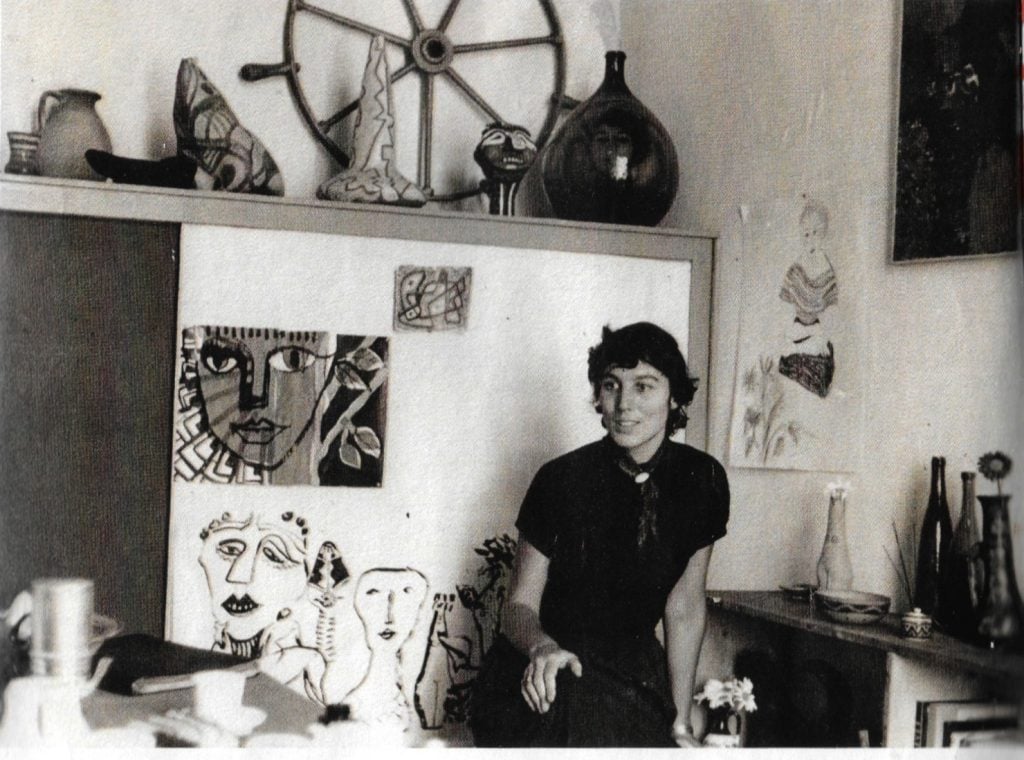
Amaranth Ehrenhalt shot for Vogue in 1951. Courtesy of Anita Shapolsky Gallery.
As an extension to the main exhibition, Gazelli is also showing work by artist Amaranth Ehrenhalt, who was born in 1928 and grew up in Philadelphia, earning her BFA at the University of Pennsylvania in 1951. She later moved to New York, where she befriended many artists and began producing work in the Abstract Expressionist style. At one time, she recalled how her desk was a door propped on top of a bathtub in her tiny Greenwich Village walk-up. As well as paintings, Ehrenhalt produced textiles, ceramics, and even a 150-foot mosaic mural in the French town of Banlieue, where she once lived.
Having long harbored a love of Europe, when Ehrenhalt was invited on a three-week trip to Paris, she ended up living there for four decades, supporting herself as a divorcée with two children through odd jobs. Her reputation inevitably suffered from being so far removed from the center of the art world at that time, but she came to know influential artists like Sonia Delaunay, Alberto Giacometti, Natalia Goncharova, and Yves Klein.
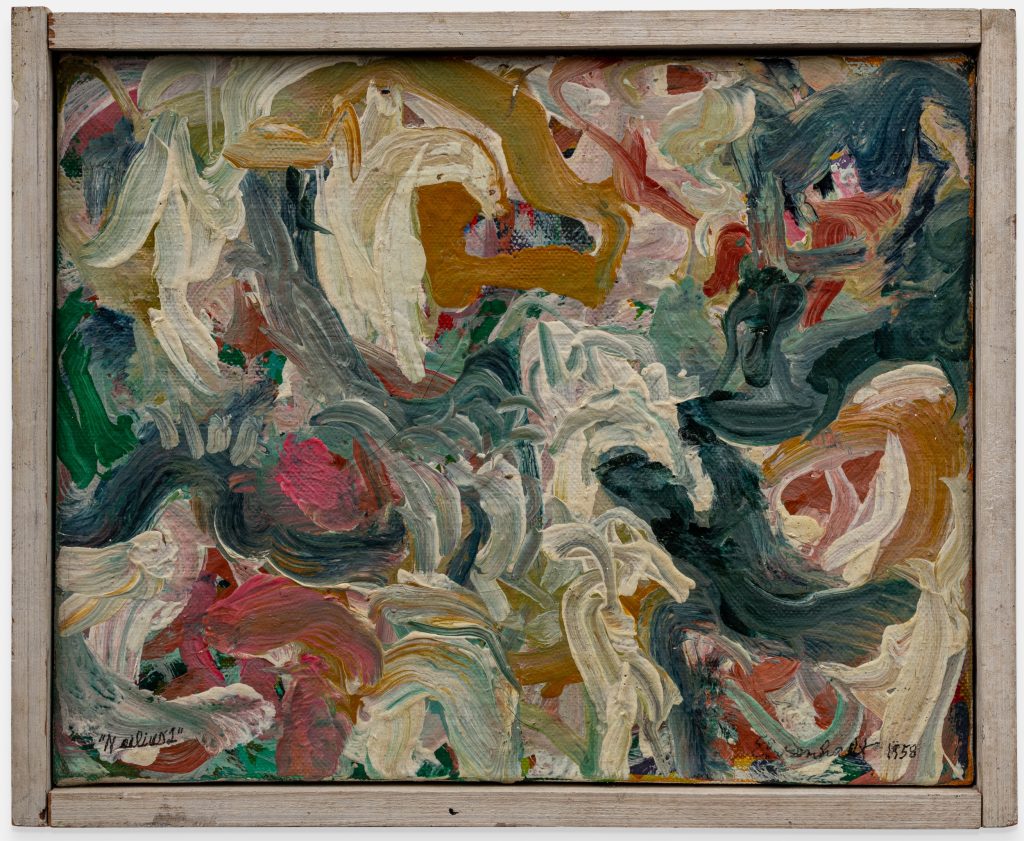
Amaranth Ehrenhalt, Neilius I (1958). Courtesy of Gazelli Art House.
In 2018, Ehrenhalt said in an interview with White Hot Magazine: “I am a colorist. I like to think about my work as a symphony on a flat surface. Everyone who has written about me use words like energy and color, ‘joie de vivre.'”
Ehrenhalt moved back to New York in 2008, where she died at the age of 93 on March 16, 2021 from coronavirus. She currently has one room as part of a larger group show “Living in the Moment of Abstract Art” at Anita Shapolsky Gallery in New York.
“Montage” is on view at Gazelli Art House in London through July 13, 2024.